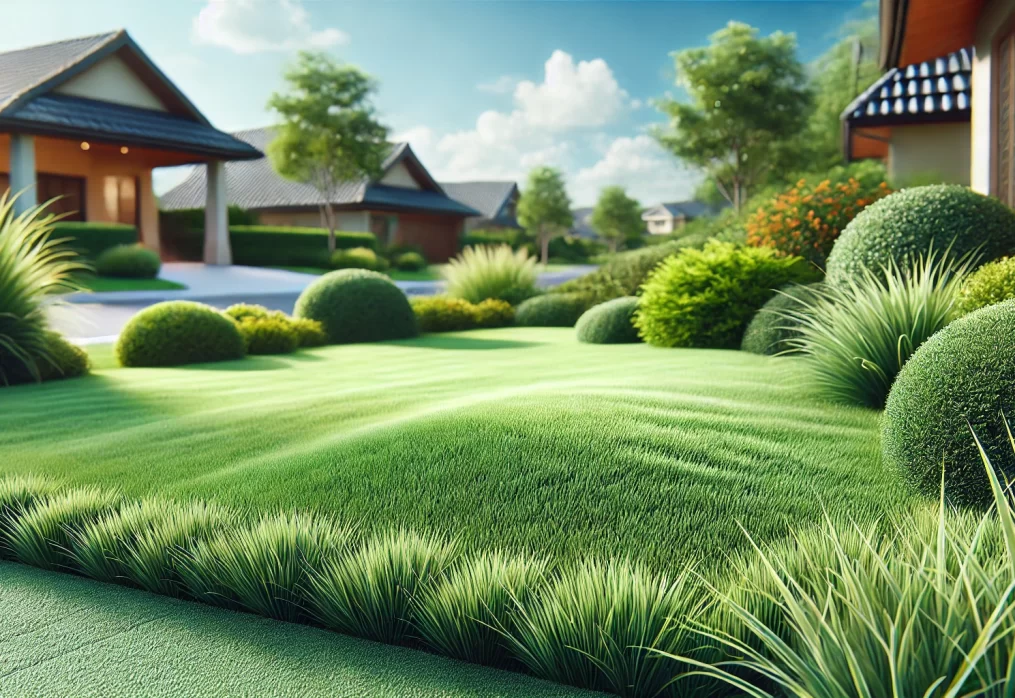Top Grass Types That Thrive in Low-Water Conditions
Maintaining a beautiful, green lawn in regions with limited water resources or frequent droughts can feel like an uphill battle. Fortunately, selecting the right grass type can significantly reduce your lawn’s water requirements while keeping it vibrant and healthy. Below, we delve into the top grass types that are perfect for low-water conditions, offering eco-friendly solutions for lawn care enthusiasts.
Benefits of Choosing Drought-Tolerant Grass
Switching to low-water grass types has multiple advantages:
- Water Conservation: Significantly reduces irrigation needs.
- Cost Efficiency: Lowers water bills and maintenance expenses.
- Sustainability: Supports environmentally friendly landscaping practices.
- Resilience: Thrives in tough conditions, requiring less care during droughts.
Let’s explore the best grass varieties suited for dry climates (grass types that thrive in low-water conditions).
Bermuda Grass
Key Features:
- Heat-resistant and ideal for warm climates.
- Forms a dense, lush lawn with minimal water needs.
Bermuda grass thrives in areas with high temperatures and limited rainfall. Its deep root system allows it to access underground water, making it highly drought-resistant. However, this grass does best with occasional watering during prolonged dry spells to maintain its green appearance.
Maintenance Tips:
- Mow at a height of 1–2 inches.
- Fertilize twice yearly for optimal growth.
- Allow grass to grow deeper roots by watering deeply but infrequently.
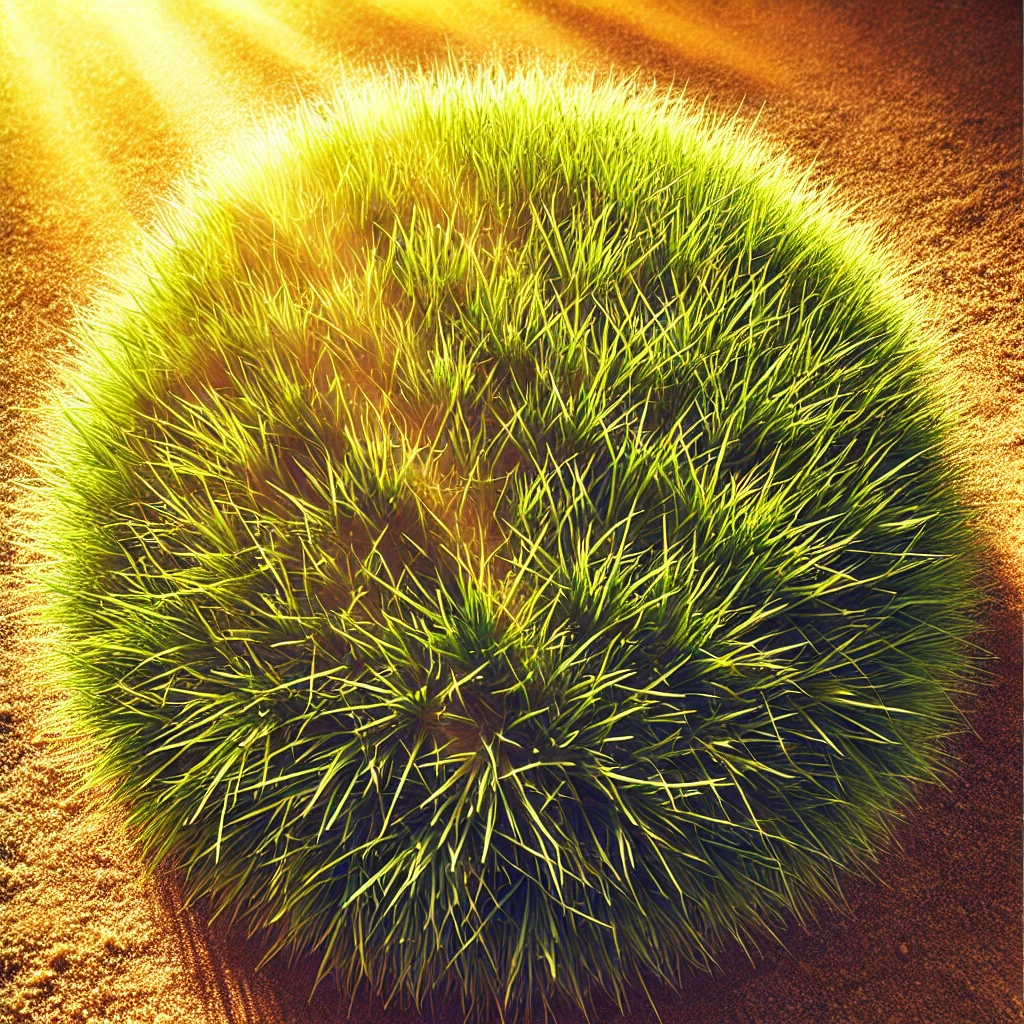
Zoysia Grass
Key Features:
- Low water and fertilizer needs.
- Tolerates heavy foot traffic and thrives in full sun.
Zoysia grass is a favorite for both residential and commercial landscapes. It adapts well to warm climates and grows slowly, reducing the need for frequent mowing. Its drought tolerance makes it an excellent option for homeowners seeking an attractive yet low-maintenance lawn.
Maintenance Tips:
- Mow every 7–14 days during the growing season.
- Use organic fertilizers to promote soil health.
- Aerate the soil annually to improve water absorption.
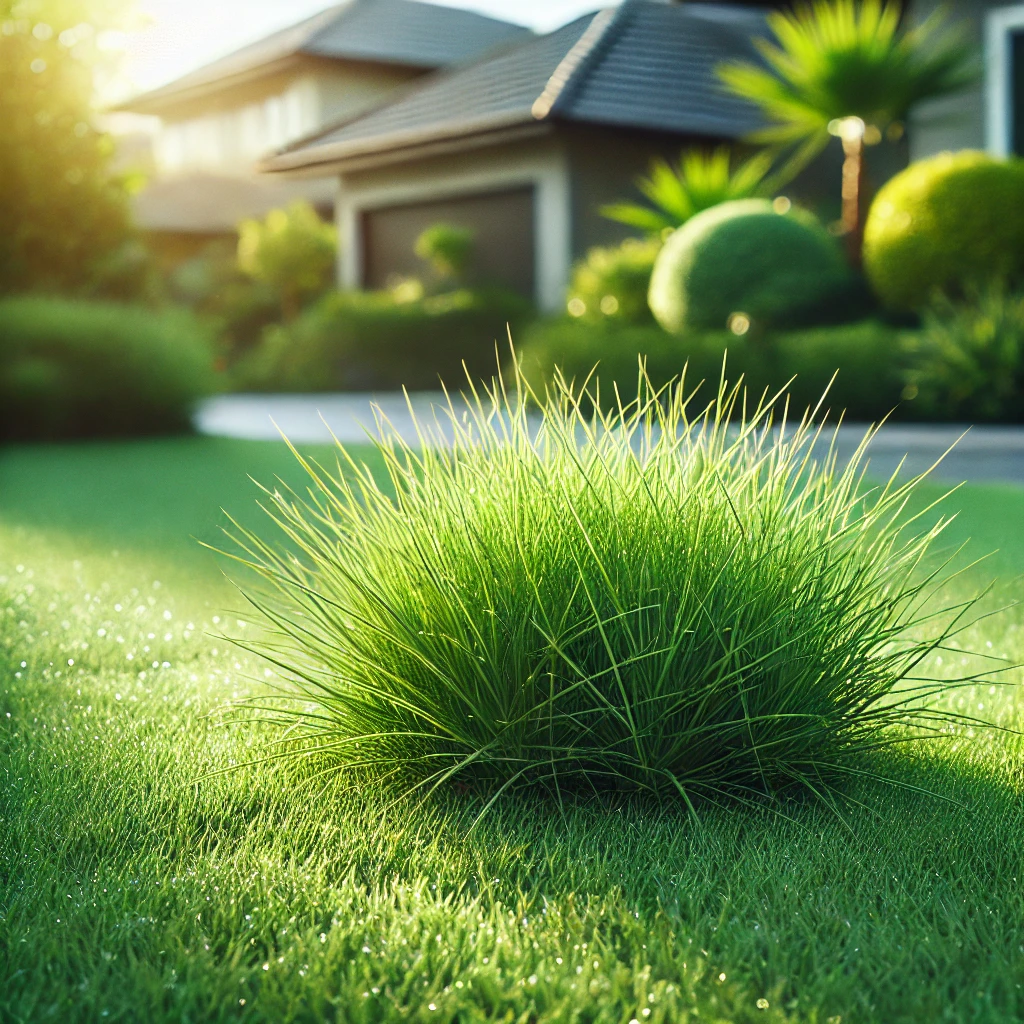
Buffalo Grass
Key Features:
- Native to North America and highly resilient.
- Requires only occasional watering and mowing.
Buffalo grass is a superstar in water conservation. It thrives in the heat and can go dormant during droughts, turning brown temporarily before reviving with rainfall. This native grass type is also resistant to most pests and diseases, adding to its low-maintenance appeal.
Maintenance Tips:
- Mow to a height of 2–3 inches for a manicured look.
- Water deeply but infrequently to encourage deep roots.
- Use natural pest control measures if needed.
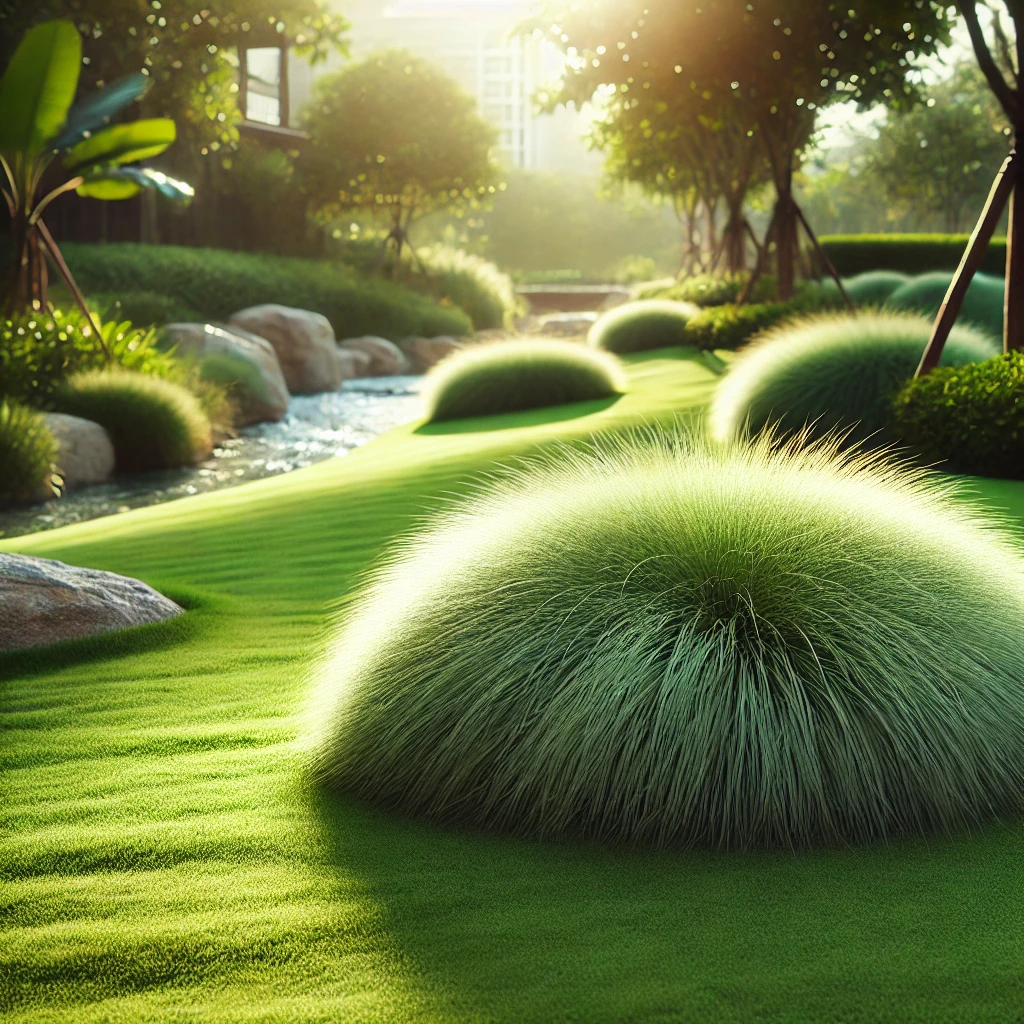
Fescue Grass (Fine and Tall Varieties)
Key Features:
- Adaptable to various climates, including cool and dry conditions.
- Deep roots make it highly drought-tolerant.
Fescue grass is a versatile option for low-water lawns. Fine fescues thrive in shaded areas, while tall fescues excel in sunny spaces. Its slow growth and durability make it an excellent choice for lawns requiring minimal upkeep.
Maintenance Tips:
- Use a sharp mower blade to avoid damaging delicate blades.
- Overseed regularly to maintain density.
- Water once a week during the hottest months.
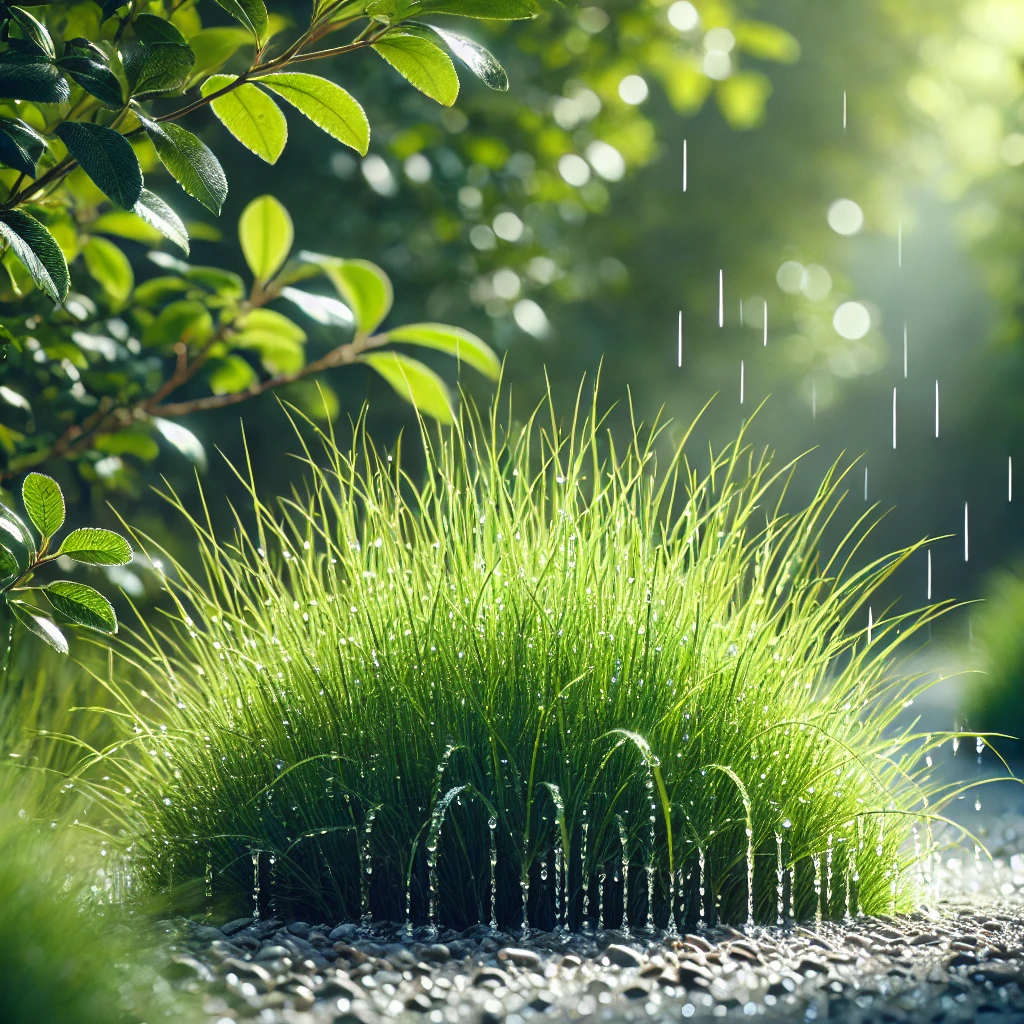
Bahia Grass
Key Features:
- Thrives in sandy soils and hot climates.
- Minimal water and fertilizer requirements.
Bahia grass is a hardy, drought-tolerant option perfect for regions with nutrient-poor soils. Its coarse texture and ability to withstand harsh conditions make it a popular choice in southern areas.
Maintenance Tips:
- Mow every 7–10 days at 2–4 inches.
- Fertilize once per year with a slow-release formula.
- Avoid overwatering to prevent shallow roots.
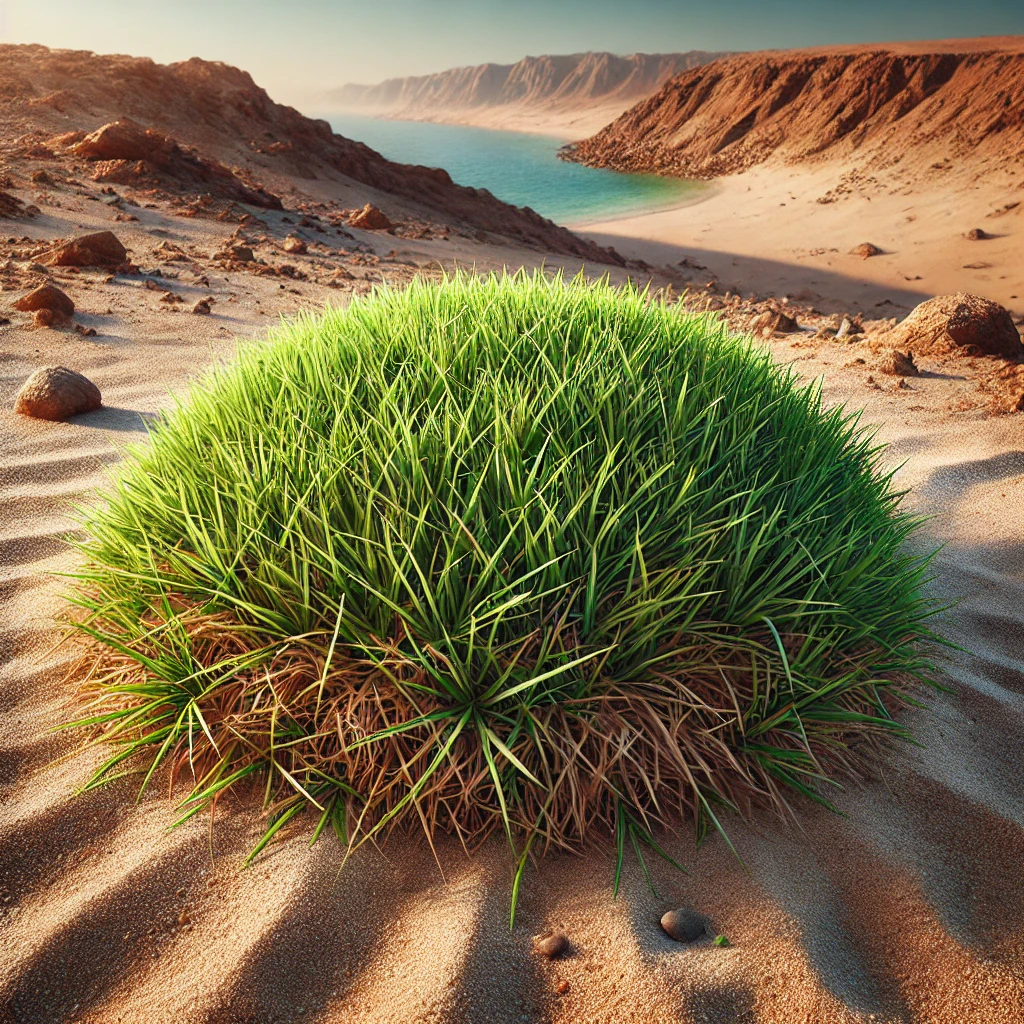
Choosing the Right Grass for Your Lawn
The best drought-tolerant grass for your lawn depends on your region, soil type, and sunlight availability. To determine the right variety:
- Analyze Your Climate: Consider your area’s temperature and rainfall patterns.
- Test Your Soil: Assess pH levels and nutrient content.
- Sun Exposure: Match the grass type to your lawn’s sunlight conditions.
If you’re uncertain, consult with a local nursery or landscaping expert to make the best decision.
Tips for Maintaining a Low-Water Lawn
Even with drought-tolerant grass, proper care ensures long-term lawn health:
- Water Wisely: Irrigate early in the morning to reduce evaporation.
- Mulch Your Lawn: Retain moisture by leaving grass clippings after mowing.
- Aerate the Soil: Enhance root growth and water absorption.
- Use Native Plants: Incorporate drought-tolerant shrubs and flowers for a cohesive landscape.
Final Thoughts
Opting for grass types that thrive in low-water conditions is a step toward sustainable landscaping. From Bermuda grass to Buffalo grass, these options provide beauty and resilience without excessive water use. By combining the right grass variety with smart maintenance practices, you can achieve a lush, eco-friendly lawn even in the driest climates.
Contact Us Today!
Ready to transform your lawn? Contact Balaji Nursery today at www.balajinursery.org or call us for a consultation at 9354173113 / 8766234417 Let us help you create the lawn of your dreams!
Last Updated on 10 months by Anjali Mehra Ph.D. in Horticulture (Punjab Agricultural University)
- Step-by-Step Guide to Lawn Grass Installation in Noida Gardens - October 5, 2025
- How to Grow & Maintain Long-Lasting Lawns in Faridabad Homes - October 4, 2025
- Top Suppliers of Natural Lawn Grass in Punjab - October 1, 2025
